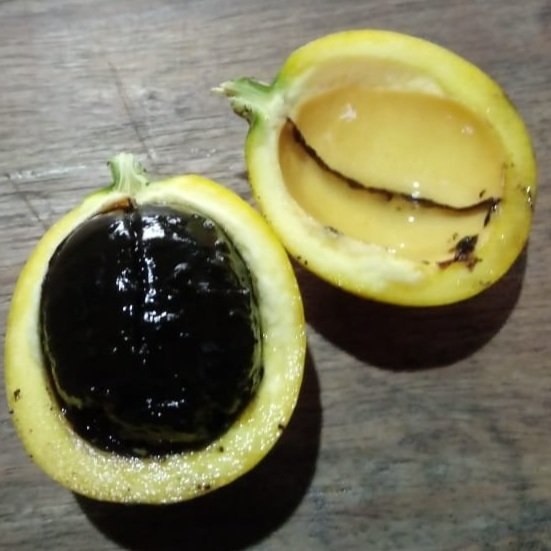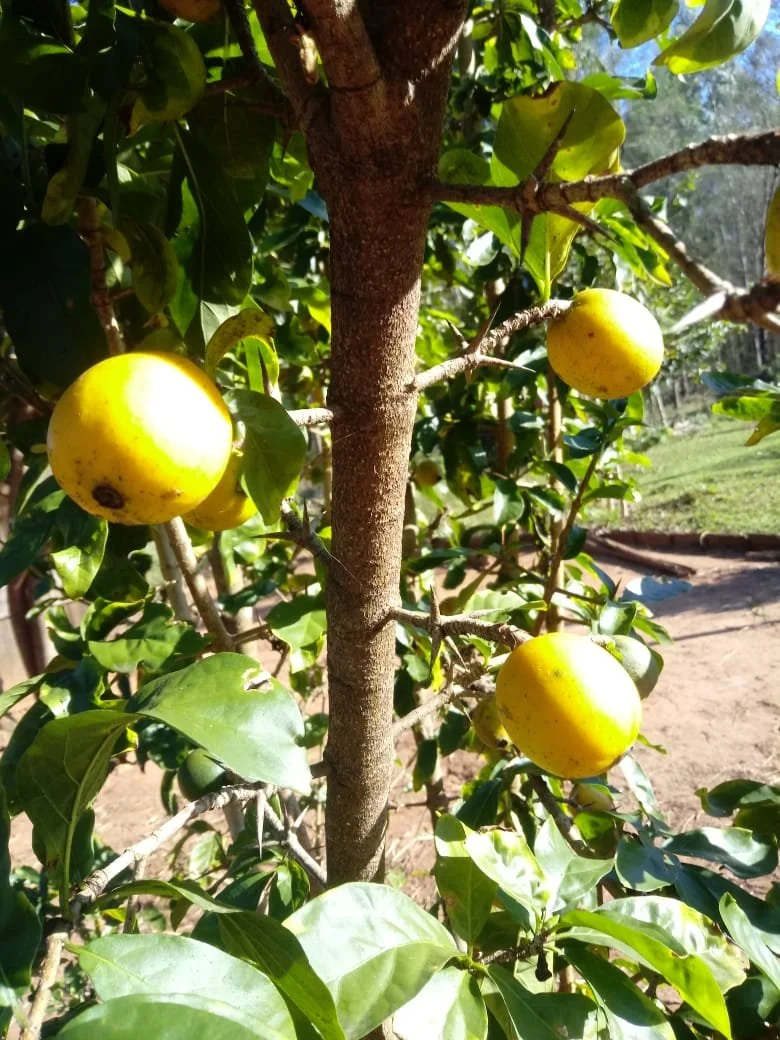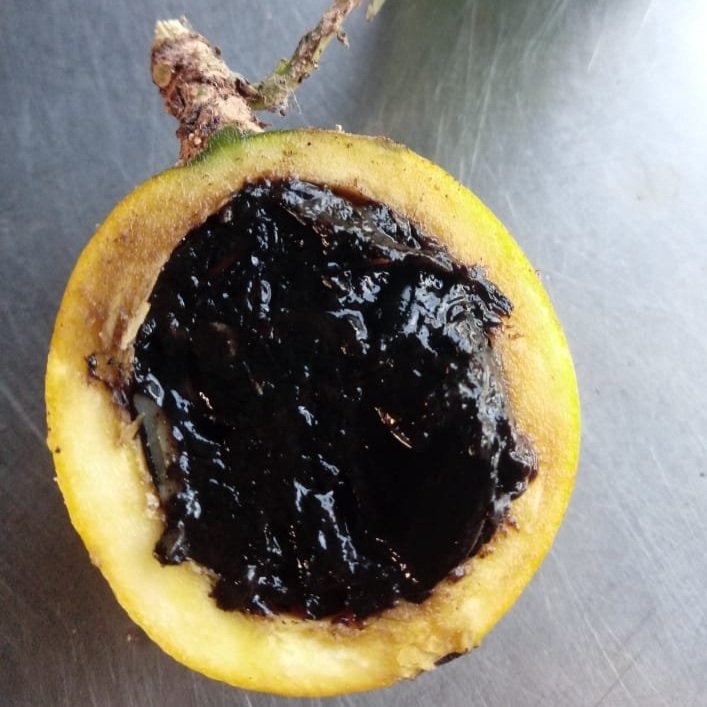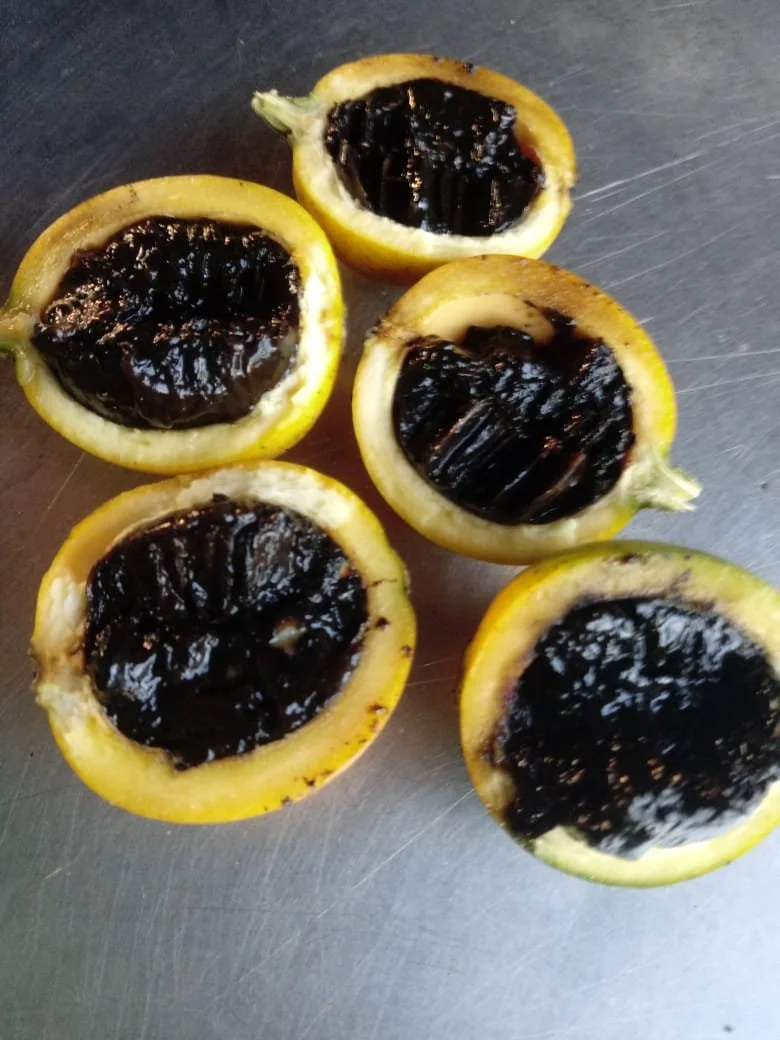 Image 1 of 5
Image 1 of 5

 Image 2 of 5
Image 2 of 5

 Image 3 of 5
Image 3 of 5

 Image 4 of 5
Image 4 of 5

 Image 5 of 5
Image 5 of 5






Randia Ferox - Guaticuzurú
Seeds were imported from Brazil. GUATICURUZÚ comes from the words of Tupi Guarani and means “Tree of crossed thorns”. It also receives the names: Angelica of the bush, Bacuparí wild, Fruit of the dog, Lemon of the bush, Wild lemon, Guaticuzurú , Jasmine of the bush and Titica of chicken. This species was previously classified as Randia spinosa, but the current accepted name is Randia ferox . In Brazil, there are about 10 species of the genus and of these 10 species, 4 are cultivated and preserved at Sitio Frutas Raras. The trunk is olive green at first and turns to grayish brown, measuring from 5 to 25 cm in diameter. The new branches are hanging and in the forest they grow more than 4 meters long on other trees, sometimes resembling a liana or climbing vine. The young branches contain triangular stipules (blades or leaf tissue) of 3 mm in length opposite to the base of the petioles (stem or leaf support) of 1.5 to 2.5 cm in length; and occasionally groups of 2 to 4 opposite or crossed spines with 1 cm in length. The fruits are tasty and have a flavor of dark chocolate with coffee and are very pleasant to eat fresh. The tree is deciduous (losing its leaves at the end of winter, flowering without leaves) and small in size, so it is very suitable for growing in large gardens and squares in places where people can stay away from the plant's thorns. This species cannot be left out of reforestation projects, as the plant is very hardy when grown in weak soils and in full sun, and its early fruit production is a plus as well. Seeds are shipped in humid vermiculite.
Seeds were imported from Brazil. GUATICURUZÚ comes from the words of Tupi Guarani and means “Tree of crossed thorns”. It also receives the names: Angelica of the bush, Bacuparí wild, Fruit of the dog, Lemon of the bush, Wild lemon, Guaticuzurú , Jasmine of the bush and Titica of chicken. This species was previously classified as Randia spinosa, but the current accepted name is Randia ferox . In Brazil, there are about 10 species of the genus and of these 10 species, 4 are cultivated and preserved at Sitio Frutas Raras. The trunk is olive green at first and turns to grayish brown, measuring from 5 to 25 cm in diameter. The new branches are hanging and in the forest they grow more than 4 meters long on other trees, sometimes resembling a liana or climbing vine. The young branches contain triangular stipules (blades or leaf tissue) of 3 mm in length opposite to the base of the petioles (stem or leaf support) of 1.5 to 2.5 cm in length; and occasionally groups of 2 to 4 opposite or crossed spines with 1 cm in length. The fruits are tasty and have a flavor of dark chocolate with coffee and are very pleasant to eat fresh. The tree is deciduous (losing its leaves at the end of winter, flowering without leaves) and small in size, so it is very suitable for growing in large gardens and squares in places where people can stay away from the plant's thorns. This species cannot be left out of reforestation projects, as the plant is very hardy when grown in weak soils and in full sun, and its early fruit production is a plus as well. Seeds are shipped in humid vermiculite.
Seeds were imported from Brazil. GUATICURUZÚ comes from the words of Tupi Guarani and means “Tree of crossed thorns”. It also receives the names: Angelica of the bush, Bacuparí wild, Fruit of the dog, Lemon of the bush, Wild lemon, Guaticuzurú , Jasmine of the bush and Titica of chicken. This species was previously classified as Randia spinosa, but the current accepted name is Randia ferox . In Brazil, there are about 10 species of the genus and of these 10 species, 4 are cultivated and preserved at Sitio Frutas Raras. The trunk is olive green at first and turns to grayish brown, measuring from 5 to 25 cm in diameter. The new branches are hanging and in the forest they grow more than 4 meters long on other trees, sometimes resembling a liana or climbing vine. The young branches contain triangular stipules (blades or leaf tissue) of 3 mm in length opposite to the base of the petioles (stem or leaf support) of 1.5 to 2.5 cm in length; and occasionally groups of 2 to 4 opposite or crossed spines with 1 cm in length. The fruits are tasty and have a flavor of dark chocolate with coffee and are very pleasant to eat fresh. The tree is deciduous (losing its leaves at the end of winter, flowering without leaves) and small in size, so it is very suitable for growing in large gardens and squares in places where people can stay away from the plant's thorns. This species cannot be left out of reforestation projects, as the plant is very hardy when grown in weak soils and in full sun, and its early fruit production is a plus as well. Seeds are shipped in humid vermiculite.

